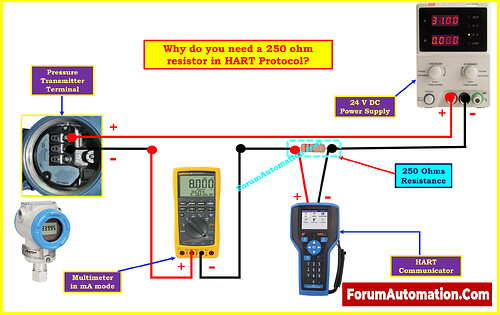Why do you need a 250 ohm resistor in HART Protocol?
Why a 250 Ohm Resistor is Needed in HART Protocol
The 250 Ohm resistor is not simply a spare part in HART communication; it is an important item that makes sure that a field device and a HART communicator or control system can talk to each other correctly.
HART (Highway Addressable Remote Transducer) adds a small digital signal on top of the normal 4-20 mA analog loop utilizing Frequency Shift Keying (FSK). The loop must have a minimum load resistance for this digital signal to be reliably picked up. If there isn’t enough resistance, the voltage from the FSK signal will be too low or unstable, which will cause communication problems or make it impossible to connect.
The standard value for this load in the industry is 250 Ohms. This resistance makes the digital signal’s voltage drop just right while still letting the analog current measurement be precise. It works like a “listening window” that lets the communicator pick up the digital pulses without interfering with the process signal.
There are two ways to get this resistance:
- External resistor: Put a 250 Ohm resistor in series with the loop and connect the communicator leads to it.
- Internal resistor: You can turn on a built-in 250 Ohm load on many DCS, PLC, and HART modems by changing the parameters.
Tip: Before attaching or enabling the resistor, always read the device instructions. Putting it in the wrong position can mess up both communication and measurement accuracy.
The 250 Ohm resistor gives the HART signal a robust, reliable path to go on. Without it, your instrument’s digital voice could never be heard.
